Brahim Hnich
MoxE: Mixture of xLSTM Experts with Entropy-Aware Routing for Efficient Language Modeling
May 01, 2025Abstract:This paper introduces MoxE, a novel architecture that synergistically combines the Extended Long Short-Term Memory (xLSTM) with the Mixture of Experts (MoE) framework to address critical scalability and efficiency challenges in large language models (LLMs). The proposed method effectively leverages xLSTM's innovative memory structures while strategically introducing sparsity through MoE to substantially reduce computational overhead. At the heart of our approach is a novel entropy-based routing mechanism, designed to dynamically route tokens to specialized experts, thereby ensuring efficient and balanced resource utilization. This entropy awareness enables the architecture to effectively manage both rare and common tokens, with mLSTM blocks being favored to handle rare tokens. To further enhance generalization, we introduce a suite of auxiliary losses, including entropy-based and group-wise balancing losses, ensuring robust performance and efficient training. Theoretical analysis and empirical evaluations rigorously demonstrate that MoxE achieves significant efficiency gains and enhanced effectiveness compared to existing approaches, marking a notable advancement in scalable LLM architectures.
Distil-xLSTM: Learning Attention Mechanisms through Recurrent Structures
Mar 24, 2025Abstract:The current era of Natural Language Processing (NLP) is dominated by Transformer models. However, novel architectures relying on recurrent mechanisms, such as xLSTM and Mamba, have been proposed as alternatives to attention-based models. Although computation is done differently than with the attention mechanism mechanism, these recurrent models yield good results and sometimes even outperform state-of-the-art attention-based models. In this work, we propose Distil-xLSTM, an xLSTM-based Small Language Model (SLM) trained by distilling knowledge from a Large Language Model (LLM) that shows promising results while being compute and scale efficient. Our Distil-xLSTM focuses on approximating a transformer-based model attention parametrization using its recurrent sequence mixing components and shows good results with minimal training.
Obsolete Personal Information Update System for the Prevention of Falls among Elderly Patients
Jan 20, 2021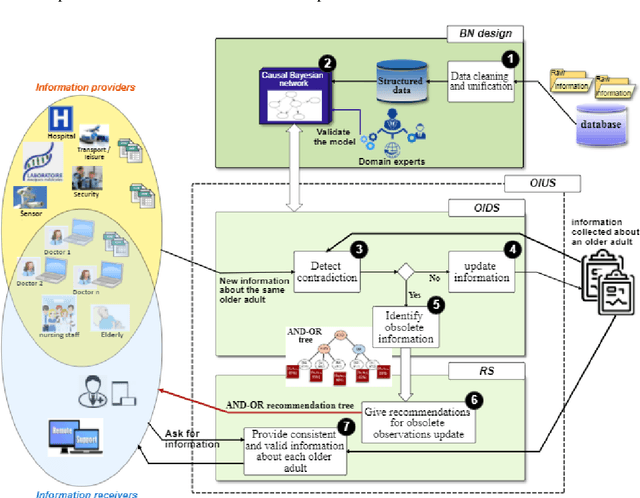
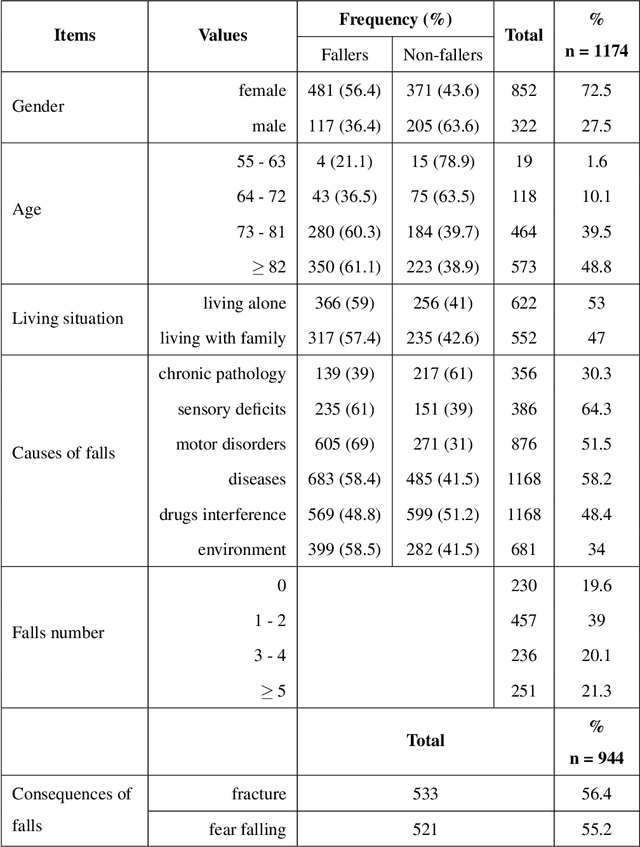
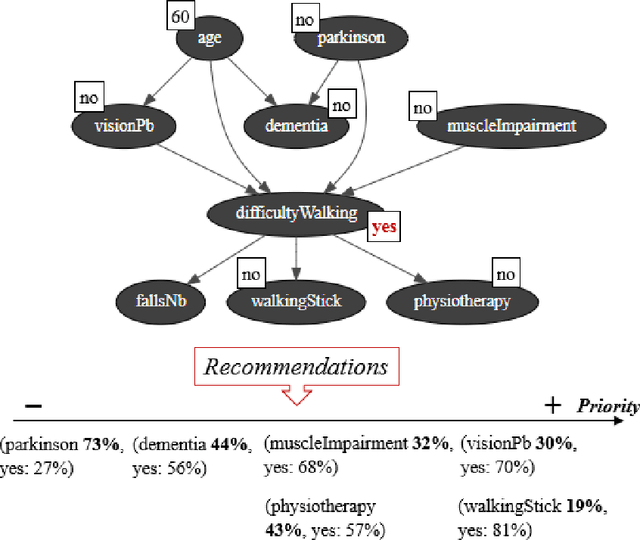

Abstract:Falls are a common problem affecting the older adults and a major public health issue. Centers for Disease Control and Prevention, and World Health Organization report that one in three adults over the age of 65 and half of the adults over 80 fall each year. In recent years, an ever-increasing range of applications have been developed to help deliver more effective falls prevention interventions. All these applications rely on a huge elderly personal database collected from hospitals, mutual health, and other organizations in caring for elderly. The information describing an elderly is continually evolving and may become obsolete at a given moment and contradict what we already know on the same person. So, it needs to be continuously checked and updated in order to restore the database consistency and then provide better service. This paper provides an outline of an Obsolete personal Information Update System (OIUS) designed in the context of the elderly-fall prevention project. Our OIUS aims to control and update in real-time the information acquired about each older adult, provide on-demand consistent information and supply tailored interventions to caregivers and fall-risk patients. The approach outlined for this purpose is based on a polynomial-time algorithm build on top of a causal Bayesian network representing the elderly data. The result is given as a recommendation tree with some accuracy level. We conduct a thorough empirical study for such a model on an elderly personal information base. Experiments confirm the viability and effectiveness of our OIUS.
Data Obsolescence Detection in the Light of Newly Acquired Valid Observations
Jan 18, 2021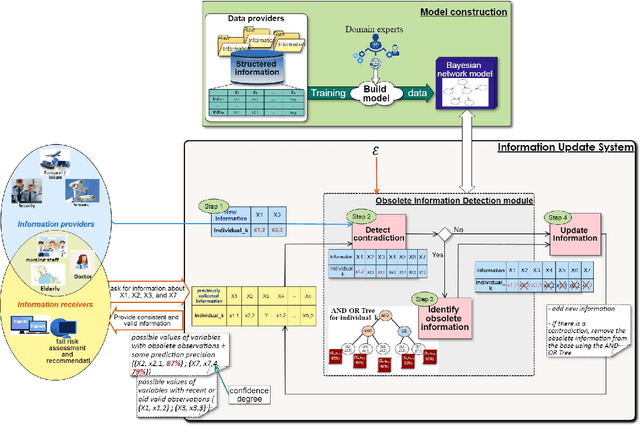
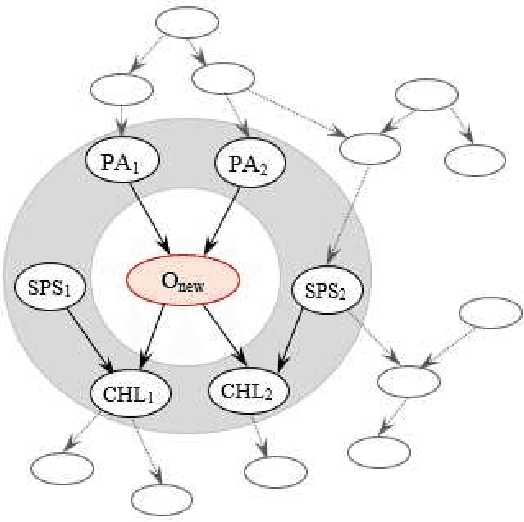
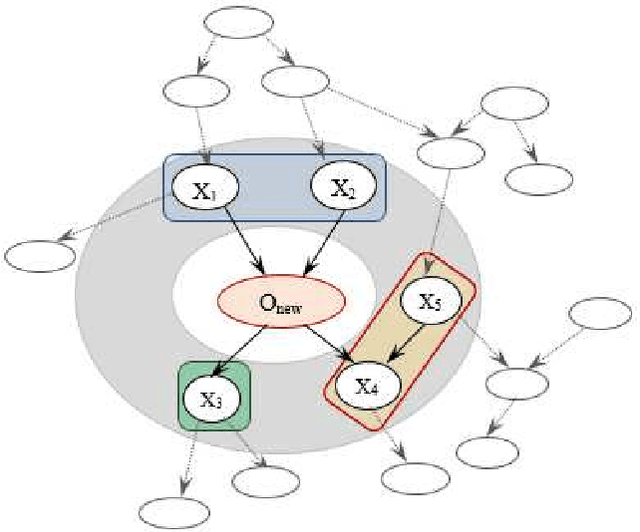
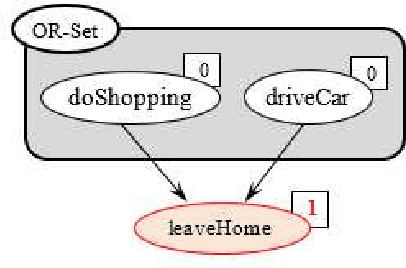
Abstract:The information describing the conditions of a system or a person is constantly evolving and may become obsolete and contradict other information. A database, therefore, must be consistently updated upon the acquisition of new valid observations that contradict obsolete ones contained in the database. In this paper, we propose a novel approach for dealing with the information obsolescence problem. Our approach aims to detect, in real-time, contradictions between observations and then identify the obsolete ones, given a representation model. Since we work within an uncertain environment characterized by the lack of information, we choose to use a Bayesian network as our representation model and propose a new approximate concept, $\epsilon$-Contradiction. The new concept is parameterised by a confidence level of having a contradiction in a set of observations. We propose a polynomial-time algorithm for detecting obsolete information. We show that the resulting obsolete information is better represented by an AND-OR tree than a simple set of observations. Finally, we demonstrate the effectiveness of our approach on a real elderly fall-prevention database and showcase how this tree can be used to give reliable recommendations to doctors. Our experiments give systematically and substantially very good results.
A Commentary on "Breaking Row and Column Symmetries in Matrix Models"
Oct 03, 2019
Abstract:The CP 2002 paper entitled "Breaking Row and Column Symmetries in Matrix Models" by Flener et al. (https://link.springer.com/chapter/10.1007%2F3-540-46135-3_31) describes some of the first work for identifying and analyzing row and column symmetry in matrix models and for efficiently and effectively dealing with such symmetry using static symmetry-breaking ordering constraints. This commentary provides a retrospective on that work and highlights some of the subsequent work on the topic.
Confidence-based Reasoning in Stochastic Constraint Programming
Jul 05, 2015


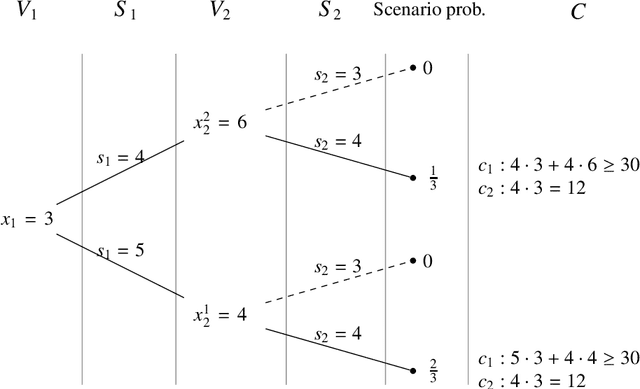
Abstract:In this work we introduce a novel approach, based on sampling, for finding assignments that are likely to be solutions to stochastic constraint satisfaction problems and constraint optimisation problems. Our approach reduces the size of the original problem being analysed; by solving this reduced problem, with a given confidence probability, we obtain assignments that satisfy the chance constraints in the original model within prescribed error tolerance thresholds. To achieve this, we blend concepts from stochastic constraint programming and statistics. We discuss both exact and approximate variants of our method. The framework we introduce can be immediately employed in concert with existing approaches for solving stochastic constraint programs. A thorough computational study on a number of stochastic combinatorial optimisation problems demonstrates the effectiveness of our approach.
* 53 pages, working draft
Conjure Revisited: Towards Automated Constraint Modelling
Sep 08, 2011
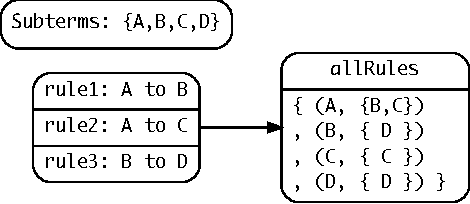
Abstract:Automating the constraint modelling process is one of the key challenges facing the constraints field, and one of the principal obstacles preventing widespread adoption of constraint solving. This paper focuses on the refinement-based approach to automated modelling, where a user specifies a problem in an abstract constraint specification language and it is then automatically refined into a constraint model. In particular, we revisit the Conjure system that first appeared in prototype form in 2005 and present a new implementation with a much greater coverage of the specification language Essence.
Multiset Ordering Constraints
May 22, 2009

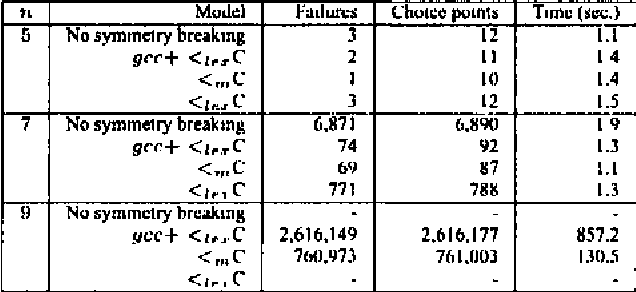
Abstract:We identify a new and important global (or non-binary) constraint. This constraint ensures that the values taken by two vectors of variables, when viewed as multisets, are ordered. This constraint is useful for a number of different applications including breaking symmetry and fuzzy constraint satisfaction. We propose and implement an efficient linear time algorithm for enforcing generalised arc consistency on such a multiset ordering constraint. Experimental results on several problem domains show considerable promise.
* Proceedings of the Eighteenth International Joint Conference on Artificial Intelligence (IJCAI-03)
The Complexity of Reasoning with Global Constraints
Mar 06, 2009
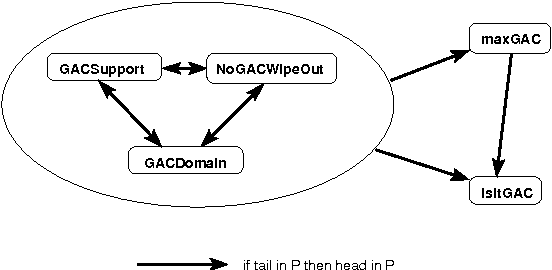
Abstract:Constraint propagation is one of the techniques central to the success of constraint programming. To reduce search, fast algorithms associated with each constraint prune the domains of variables. With global (or non-binary) constraints, the cost of such propagation may be much greater than the quadratic cost for binary constraints. We therefore study the computational complexity of reasoning with global constraints. We first characterise a number of important questions related to constraint propagation. We show that such questions are intractable in general, and identify dependencies between the tractability and intractability of the different questions. We then demonstrate how the tools of computational complexity can be used in the design and analysis of specific global constraints. In particular, we illustrate how computational complexity can be used to determine when a lesser level of local consistency should be enforced, when constraints can be safely generalized, when decomposing constraints will reduce the amount of pruning, and when combining constraints is tractable.
SLIDE: A Useful Special Case of the CARDPATH Constraint
Mar 03, 2009
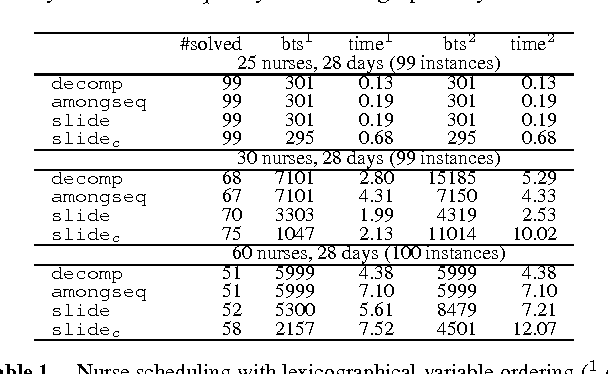
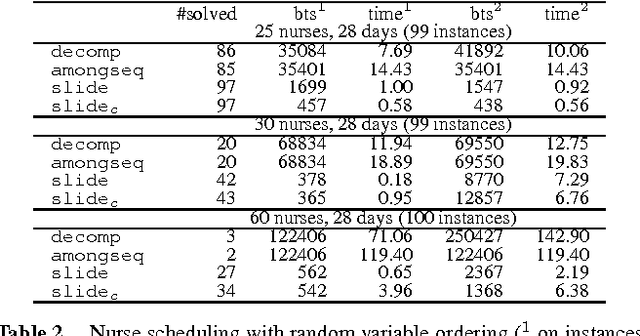
Abstract:We study the CardPath constraint. This ensures a given constraint holds a number of times down a sequence of variables. We show that SLIDE, a special case of CardPath where the slid constraint must hold always, can be used to encode a wide range of sliding sequence constraints including CardPath itself. We consider how to propagate SLIDE and provide a complete propagator for CardPath. Since propagation is NP-hard in general, we identify special cases where propagation takes polynomial time. Our experiments demonstrate that using SLIDE to encode global constraints can be as efficient and effective as specialised propagators.
* 18th European Conference on Artificial Intelligence
 Add to Chrome
Add to Chrome Add to Firefox
Add to Firefox Add to Edge
Add to Edge